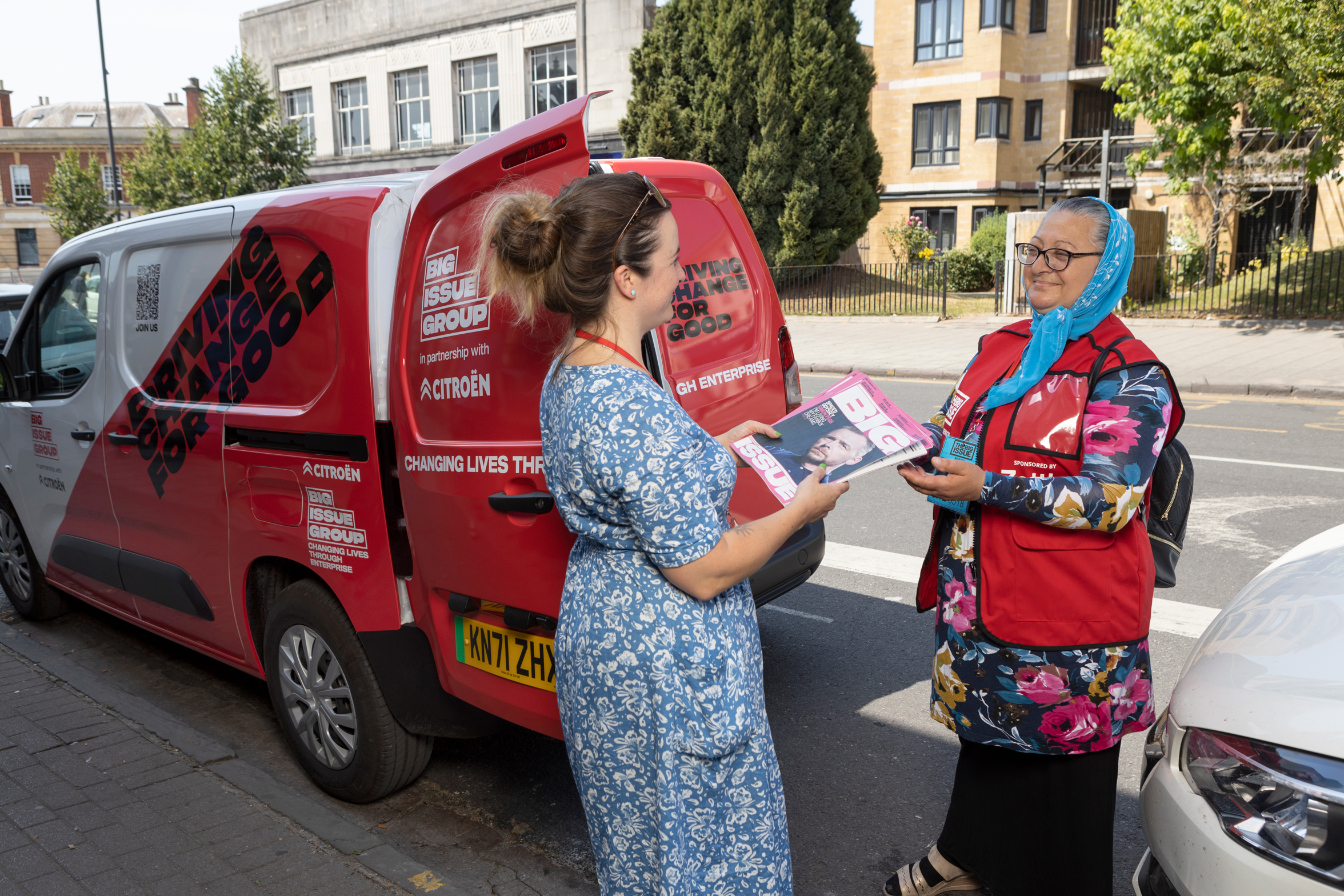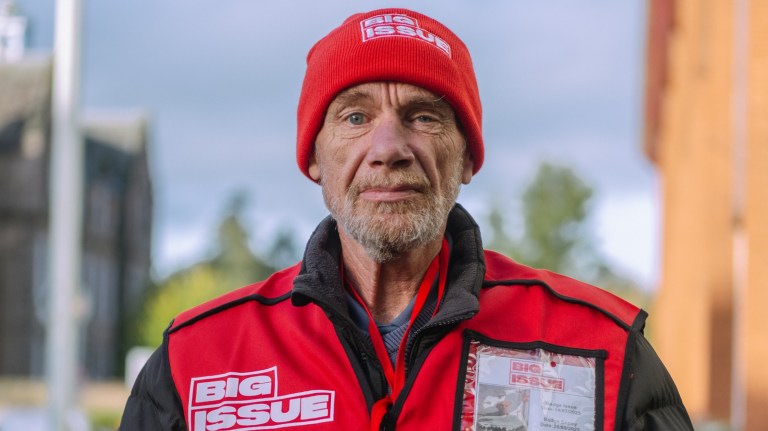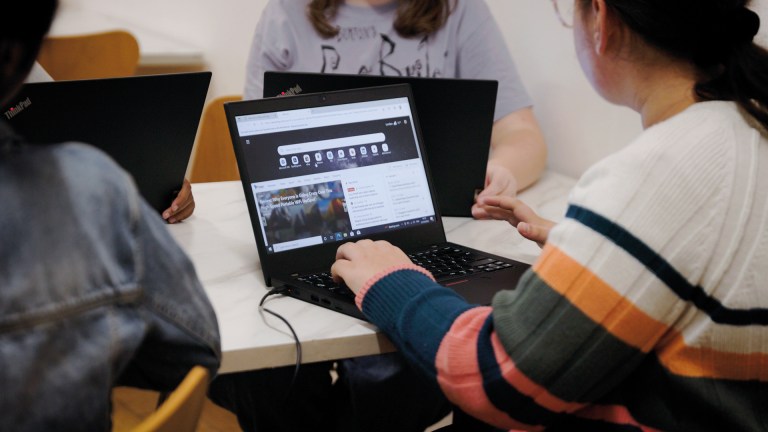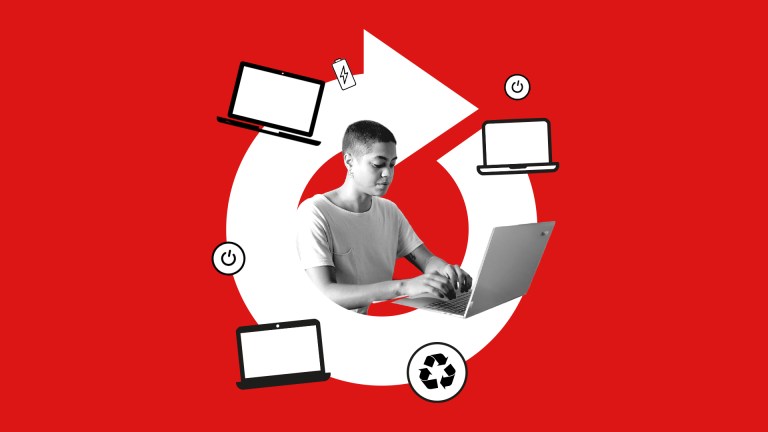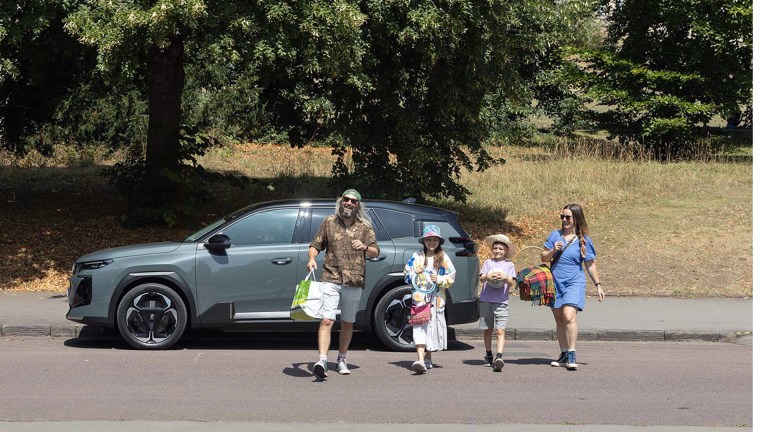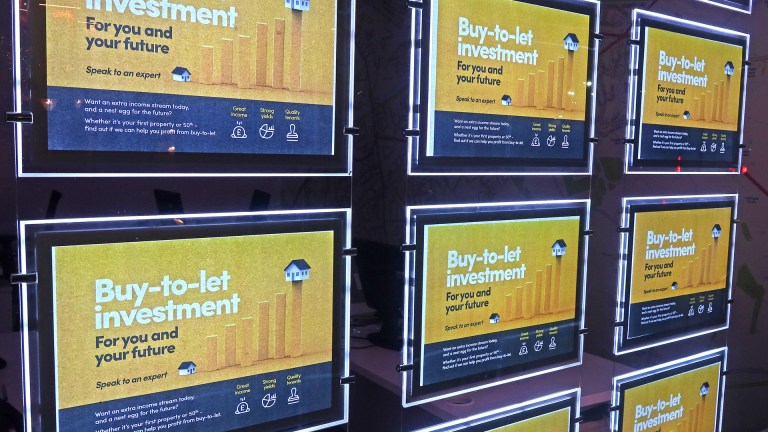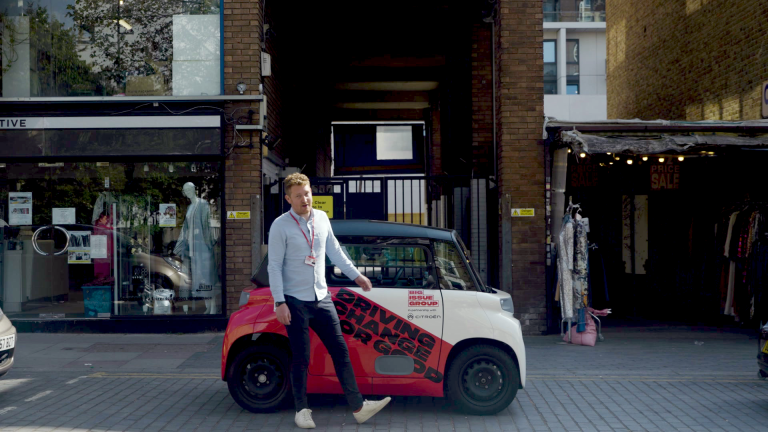It’s Friday morning in early autumn, the sun is shining and we’re on the road. Amber Jether, who works for Big Issue’s South West frontline team, has a vanload of magazines and a lot of miles to go before we get back to the Bristol office. We’re dropping the new issue off to vendors in Swindon, Marlborough and Bath, a journey of around 90 miles that will take most of the day. We head through towns and villages, past the white horse carved into the chalk near Alton Barnes, and onwards. It’s a smooth trip, and the Citroën ë-Berlingo Van’s quiet electric engine gives us plenty of scope to chat.
For Amber, this Friday run is one of the highlights of her week. “One Friday I saw my first crop circle up at Hackpen Hill,” she says. “Not everyone gets to do that in their job. I feel lucky that I get to see those kinds of things.” This evening she’ll be back in Bristol, dropping magazines at Jamaica Street. “I’d never driven an electric vehicle before,” she says. “It’s smooth, relaxing, and the newest van I’ve ever driven. Sometimes I instinctively go to change gear. Of course there aren’t any. It feels like I’m gliding.”
The van has changed how the frontline teams work across the country. When Big Issue partnered with Citroën three years ago, replacing diesel vans with electric ones, the aim was straightforward: cut carbon emissions across the 350,000 miles covered each year, navigate Clean Air Zones without extra costs, and redirect fuel savings back into supporting vendors. But what’s emerged goes beyond the practical benefits. The vans have become mobile offices; spaces where the real work of connection happens.
Frontline manager Hattie Greenyer uses the ë-Berlingo Van for everything from magazine drops to outreach. “It’s a weekly rhythm,” she explains. “Pick up on Friday, drop off through Monday and Tuesday – and then we use it ad hoc through the week to get magazines to vendors who can’t always make it into the office.” For vendors with mobility issues or those based further out, having magazines delivered directly means more time on their pitch and more income.
When Amber arrives at a pitch, there’s always a moment to check in. Vendors are pleased to see the van – it’s not just magazines arriving, it’s someone who knows their name, remembers their plans, asks how the week’s been. She uses these stops to make sure people are OK, to talk through what’s coming up and to offer support. Last week she drove to Salisbury to sign up a new vendor and get them set up at a pitch by the train station. While she was there, she visited another vendor who needed an electricity voucher and helped make an optician appointment. “A reliable vehicle is so important,” she says. “Mondays and Fridays are long days on the road – without it I just couldn’t do my job.”
The electric vans have proved themselves in ways that aren’t obvious until you’re out doing the work. Hattie talks about using hers for pitch disputes, arriving quickly when there’s a complaint or someone in the wrong place. For the kind of short, frequent journeys that make up most of her week, electric makes sense. “In the city, you barely use any battery at all,” she says, “and it feels good knowing you’re not polluting.”

